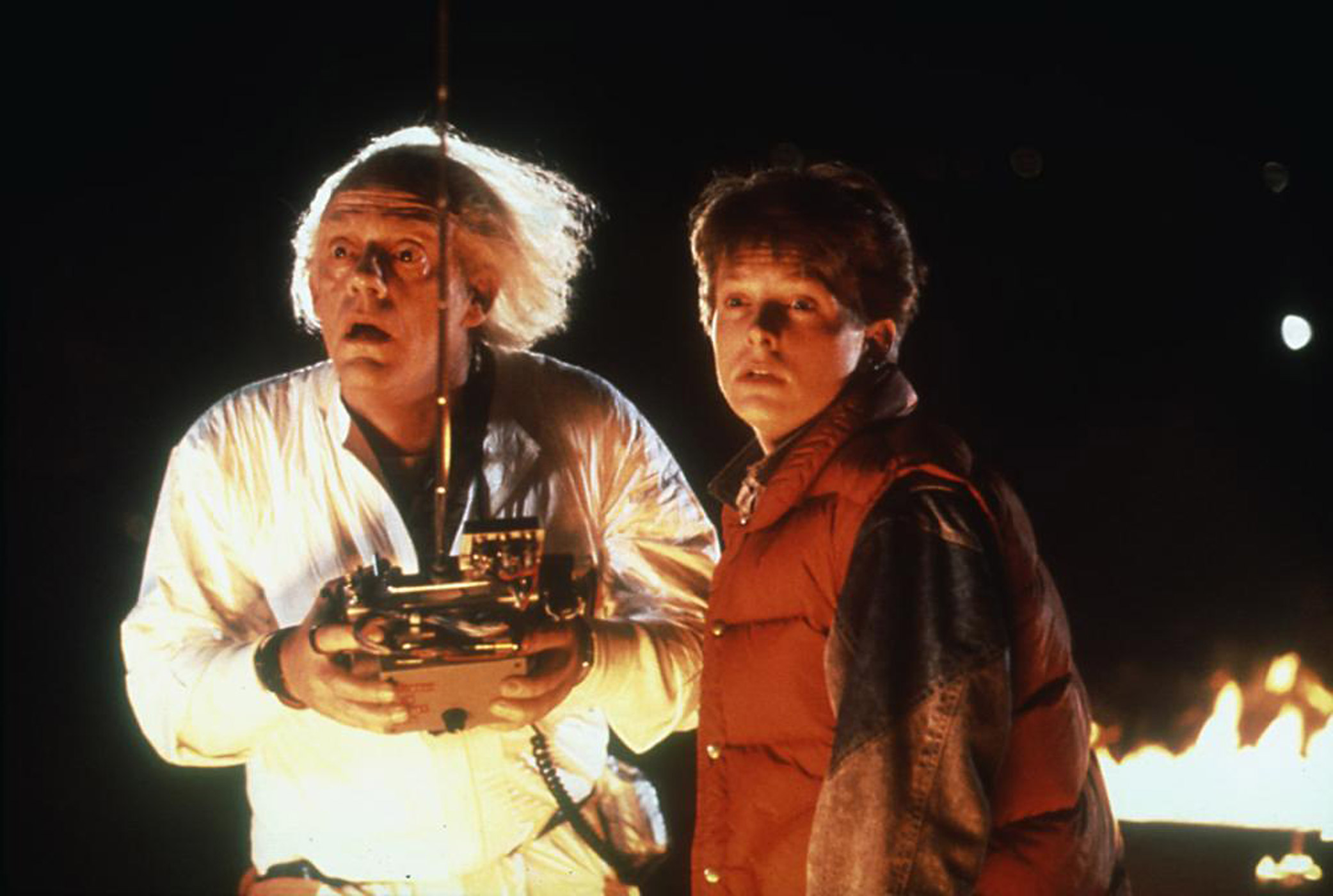Written by Melissa Allen, who you can follow on Twitter at @melissajournal

The Back to the Future trilogy (beginning in 1985) is one of the most unique franchises in the world, and grossed an amazing $975.2M from just a $99M budget with its first film alone. The first movie opens with charm and wit, showcasing a brilliant soundtrack from the very start, with the infectious Back In Time, performed by Huey Lewis & The News.
Marty McFly (Michael J. Fox) is introduced in the first instalment of the trilogy, as a youngster who must travel back in time with the enigmatic Doc Brown (Christopher Lloyd) in order to 'fix' the future. This movie employs a fantastic cast to play along with this brilliant plot, including Lea Thompson as the lovable Lorraine, and Crispin Glover as hopeless romantic, George McFly.
These films are vastly different to what we see in cinemas today - which are mostly sequels, prequels or based off of something that's already been established. While there is nothing inherently wrong with that, there is nothing like a well-done, hearty original.
Today’s films may seem too focused on CGI and confusing plot points, while Marty McFly’s journey is unlike anything we've seen since the trilogy came to a close in 1990. These movies are so perfectly executed and are even used in popular culture and films today – such as its mention in this year’s Avengers: Endgame, when the Avengers discuss how time travel should work.
Time travel is of course a fictional concept. However, having three films devoted to that concept alone was revolutionary back in 1985, and understandably so. The daring trilogy challenged this notion by making it a reality - a comedic, warming one that lured audiences in by the millions. The comedy coming from the duo of young, jumbled Marty McFly paired with unpredictable Doc Brown is charming and works so very well, and brings the franchise to a whole new level of enjoyment and even grounded reality.
That 'reality' is something that is difficult to bring into a franchise like this, but by using this duo and utilising the audience as a basis for new and exciting things these films managed to become something completely unique and made them classics from the very beginning.
The level of CGI and greenscreens used in this franchise is noticeable in today's world. However, for films made between 1985 and 1990 the use of CGI on the Delorean and the stunts performed in the franchise is exceptional, and does still look respectable despite the technological advancements in the past couple of decades. Any special effects, however, are used only when they are needed – grounding these films even more and ensuring your focus is on the characters and the creative storyline.
Some clichés are seen within this film, and while that may seem like a negative, it can be turned into a positive if done well. One cliché is the theme of romance; high-school romance in particular. While this may seem simple, within the first film this cliché is utilised in a very interesting way as Marty must enter high school while he is in the year 1955, when his parents were teenagers. Marty’s task is to get his parents back together, but in doing so he crosses paths with his mother, a young Lorraine. This is where the cliché has been flipped on its head as Lorraine develops a crush on Marty. The notion of high-school romance is cleverly twisted into a cringey romance storyline – which of course causes uncomfortable comedy - as it should! The franchises’ ability to twist common tropes and clichés is part of the reason these films are so renowned.
We can't talk about Back to the Future, without mentioning the villain throughout all three films – Biff Tannen (Thomas F. Wilson). He also grounds these films as he (or a version of him from the year each film is set) is in each film, causing our protagonists to have a different journey, but with the same callous antagonist blocking their way. This links all three films in yet another way other than Marty and Doc, giving us perhaps one of the most consistent baddies in cinema.
These films seem to do everything perfectly – and the soundtrack is no exception. The first film employs such perfect songs to accompany the journey you take along with Marty McFly. The sing choice for Marty’s solo towards the end of the film is a well-thought out, ingenious choice as Johnny B. Goode by Chuck Berry was released in 1958, three years after this part of the film is set. This shows the film to not only perfectly match characters together but to put this song in caused the infamous line after the crowd looked shocked at this new music: “Guess you guys aren’t ready for that yet… but your kids are gonna love it.”
This franchise was an instant classic, and should truly be admired for the interesting works of art they remain to this day. To take such a complicated idea such as time travel and created something so humorous, adventurous and that ages so well over time is possibly why it is one of the most well-known, and well-loved franchises of all time. But no reboots please - we'll stick with the classics.
Tagged in Back To The Future

